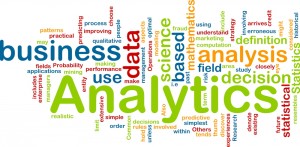Jinho Park
MIS 2501 FLASH RESEARCH PAPER #2
Jace Jinho Park
There is an opportunity for our company to save more than $9 million in the next three years by consolidating our datacenter servers using virtualization. Purchasing and maintaining servers is expensive for our company and current method of maintaining physical servers is inefficient. Virtualization, will cut the maintenance cost significantly, which will prepare our company to grow larger with reduced costs.
Virtualization works by creating virtual servers from one physical server to consolidate and reduce the hardware requirements by the ratio of 10:1 or better. Meaning that with virtualization, one physical server is able to run 10 virtual servers. Not only does virtualization allow us to consolidate server workloads, it will reduce our cost significantly. Virtualization will allow us to run 80% of our servers under VMware, which means that we will only need 200 physical servers and run the other 800 servers with 80 virtual machines.
While purchasing a virtual server is costly, $16,000 per server, the total cost to purchase and maintain virtual servers will run on much lower than that of physical servers. Maintaining physical servers will cost us $14 million in three years while virtualization will only cost us $4.8 million. We are able to save more than $9 million, reducing the cost by more than 65% in the next three years. It is no doubt that more datacenter and servers will be required as we grow and enter into the global market. It is crucial for our company to start investing in the virtualization to have a sustainable method of maintaining our servers. In the near future, my team. By investing in virtualization now, we will be one of the first movers into this technology, which will set our company into the right direction of leading the market.
Works Cited
“Virtualization Basics.” , What Is Virtualization: VMware. N.p., n.d. Web. 10 Feb. 2015.
“Virtualization.” What Is ? N.p., n.d. Web. 09 Feb. 2015.
“Virtualization.” Wikipedia. Wikimedia Foundation, n.d. Web. 11 Feb. 2015.
MIS 2501 FLASH RESEARCH PAPER #1
For each minute of downtime our company suffers, we lose $14,800. Last year, we experienced 10 outages, which resulted in about $25 million in downtime cost. This cost will reoccur if not treated properly. As the CTA of the company, by carefully analyzing our company’s capabilities, my team and I were able to come up with a solution to minimize the downtime costs in the future.
Currently, our company is running our ERP system with the Tier 1 Data Center. The Tier 1 Data Center gives our system 99.67% availability throughout the year, meaning the system will fail approximately 1,734 minutes per year. Because Tier 1 only has a single path for power and no redundant components, its reliability is not on par with other Tiers. I recommend our company to upgrade this system to Tier 3, which consists of multiple active power path as well as redundant components to increase its reliability to 99.98%.
It will cost $35 million for our company to upgrade our data system and will take one year to build. Though costly, within 3 years, we will be reducing costs by $13 million. By upgrading the company’s system, downtime per year will decrease to just 105 minutes decreasing total downtime cost by $24 million per year. In the past, it was adequate for our company to have Tier 1 data center. However, now that our business is growing, it is necessary for the company to upgrade its data center. Our company is growing at a fast pace and it will soon have presence all over the country and, potentially, the world. The Tier 3Data center allows our company to be ready for the worst situation and will be the most cost-effective upgrade.
Works Cited
Avelar, By Victor. Guidelines for Specifying Data Center Criticality / Tier Levels (n.d.): n. pag. Web. 25 Jan. 2015. <http://www.apcdistributors.com/white-papers/Architecture/WP-122%20Guidelines%20for%20Specifying%20Data%20Center%20Criticality%20-%20Tier%20Levels.pdf>.
“Data Center Tiers.” What Is Data Center Tiers? Webopedia. N.p., n.d. Web. 25 Jan. 2015.
“Explain: Tier 1 / Tier 2 / Tier 3 / Tier 4 Data Center.” Linux Unix Tutorial for Beginners and Advanced Users NixCraft RSS. N.p., n.d. Web. 25 Jan. 2015.
Data Analytics
After leaving Temple for a semester to work at Johnson and Johnson as Supply Chain Consolidations Co-op, I was very excited to start my Fall 2013 semester. Being an MIS minor, I decided to enroll in Temple’s Data Analytics course. Because I only took introduction to MIS course, I did not know what to expect from this class. Zhewei Zhang was our professor and he utilized the MIS community website to update our grades and course information. This was different because all of my other professors used Blackboard to do so. I am happy to say that I took this class and had Professor Zhang as my instructor because he was thorough with his lessons and really tried to help students figuring things out.
In this course, I was able to use Workbench to use SQL codes in order to store and extract data, update and remove tables, and most importantly became aware of this software. It was a very neat way to organize and analyze the data given. We also had lessons about pivot tables, which I was not too familiar with before, and now I will be able to use this tool during my next internship. I also learned about the classification methods such as, Decision Trees, Association, and Clustering. This was a great lesson because the three classification can be utilized to help business partners make decisions with their real life business scenarios. It is also very helpful because I can provide business partners with visuals to support the recommendations. I suggest all other students to take this course and really try to learn the material because it will help them in the long-run.


